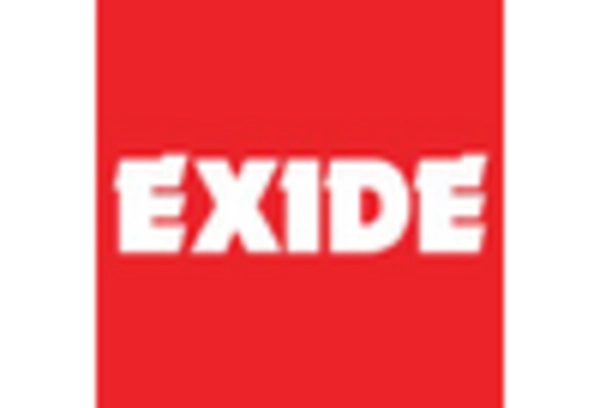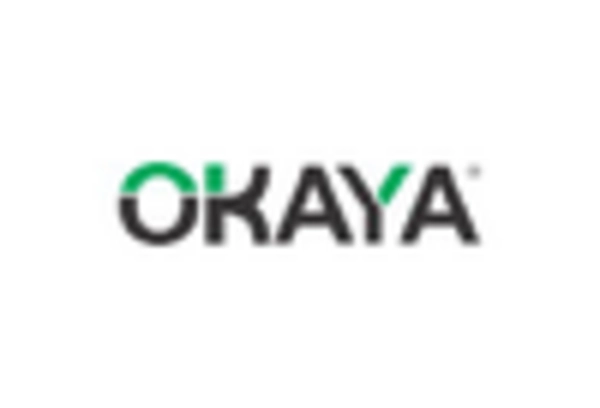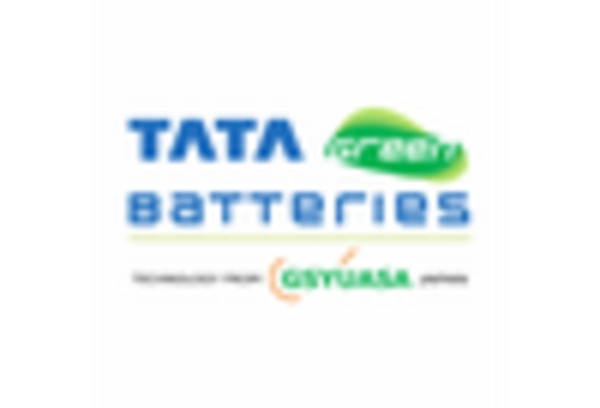Growing Environmental Awareness
The increasing awareness of environmental issues is significantly influencing the Electric Rickshaw Battery Market. As urban populations grow, so does the concern over air pollution and greenhouse gas emissions. Electric rickshaws, powered by advanced batteries, offer a cleaner alternative to conventional vehicles. This shift is evident in various cities where electric rickshaws are being promoted as a solution to combat urban pollution. Reports indicate that regions adopting electric rickshaws have seen a reduction in emissions by up to 40%. This heightened environmental consciousness among consumers is likely to drive demand for electric rickshaw batteries, as more individuals seek sustainable transportation options.
Government Policies and Incentives
Government policies and incentives play a pivotal role in shaping the Electric Rickshaw Battery Market. Many governments are implementing favorable regulations and subsidies to promote electric vehicles, including rickshaws. These initiatives often include tax rebates, grants for battery manufacturers, and funding for charging infrastructure. For example, certain regions have reported a 30% increase in electric rickshaw adoption due to such incentives. This supportive regulatory environment not only encourages manufacturers to invest in battery technology but also motivates consumers to transition from traditional fuel-based rickshaws to electric alternatives. Consequently, the Electric Rickshaw Battery Market is poised for growth as these policies continue to evolve.
Cost-Effectiveness and Economic Viability
The cost-effectiveness of electric rickshaws is a crucial factor driving the Electric Rickshaw Battery Market. With rising fuel prices and maintenance costs associated with traditional vehicles, electric rickshaws present a more economical alternative. The operational costs of electric rickshaws are significantly lower, primarily due to reduced fuel expenses and minimal maintenance requirements. Market analysis shows that operators can save up to 50% on fuel costs by switching to electric rickshaws. This economic viability is attracting more entrepreneurs to invest in electric rickshaw businesses, thereby stimulating demand for electric rickshaw batteries. As the market continues to evolve, the focus on cost-effectiveness is likely to remain a key driver.
Technological Advancements in Battery Chemistry
The Electric Rickshaw Battery Market is experiencing a transformative phase due to rapid advancements in battery chemistry. Innovations such as lithium-ion and solid-state batteries are enhancing energy density and reducing charging times. These developments are crucial as they directly impact the performance and efficiency of electric rickshaws. For instance, the introduction of high-capacity batteries has led to an increase in the average range of electric rickshaws, making them more appealing to consumers. Furthermore, the cost of battery production has been decreasing, which could potentially lower the overall price of electric rickshaws. As a result, the Electric Rickshaw Battery Market is likely to witness a surge in demand, driven by these technological improvements.
Urbanization and Increased Demand for Public Transport
Urbanization is a significant driver of the Electric Rickshaw Battery Market. As cities expand, the demand for efficient and affordable public transport solutions rises. Electric rickshaws are emerging as a viable option due to their low operational costs and ability to navigate congested urban areas. The market data suggests that urban areas with high population density are witnessing a surge in electric rickshaw usage, with some cities reporting a 25% increase in electric rickshaw registrations over the past year. This trend indicates a shift towards electric mobility solutions, further propelling the growth of the Electric Rickshaw Battery Market as manufacturers respond to the increasing demand.

















Leave a Comment